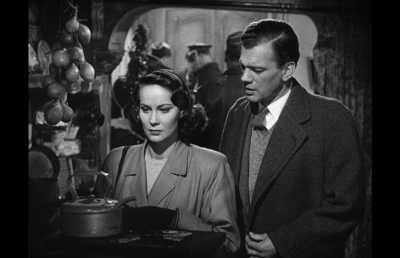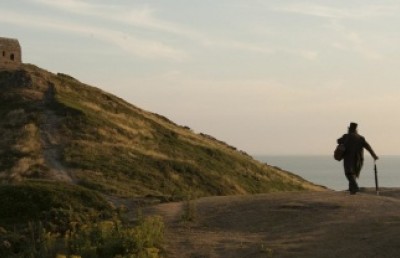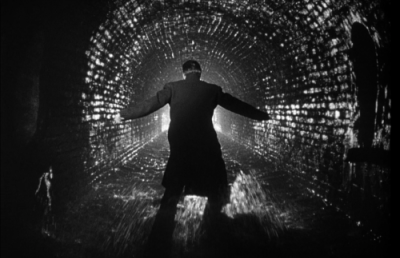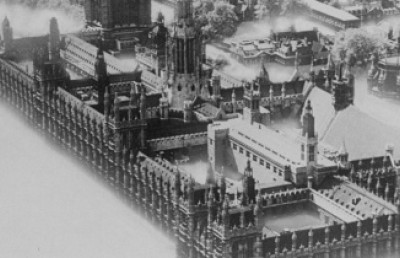“They Affect Dogs as Well”- Crime and British Video Censorship in the Early 1980s
The Video Nasties
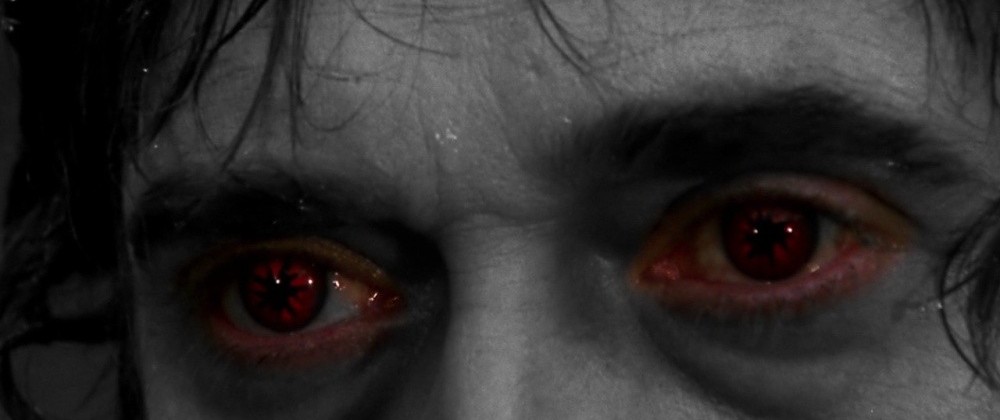
The video boom has meant that thousands of out-of-work, unstable teenagers are currently gorging themselves day-in-day-out on scenes of torture and depravity . . . We need censorship at the moment as we have never needed it before. And if video censorship of the most stringent kind isn’t brought in pretty damned quick we’re going to have an upsurge in violence and terror and abuse in our land and homes the like of which we never suspected in our wildest terror (“Switch…” 7).
So wrote the popular British tabloid newspaper the Daily Mail in one of its many columns concerning a series of videos which were collectively known throughout Britain as “video nasties.” Essentially, in the early 1980s, a wave of sensationally marketed and explicitly violent films were released in the country through the new medium of video. Responding to the unregulated “depravity” of these films, a crusade was mounted against them from 1982 to 1983, as the innocent minds of children and, consequently, the future of British society, appeared to be threatened by the allegedly immense corrupting influence of these perverse objects. This crusade culminated in 1984 with the British government’s passing of the Video Recordings Act, which sought to strictly regulate the video trade and, in effect, made it illegal to sell certain videos in the United Kingdom. In this essay I will explore this event, examining how the moral panic managed to take root and eventually led to increased levels of film censorship. Moreover, in analyzing the social climate of Britain at the time, I will also question the centrality of the content of the nasties in this move towards greater censorship. To this end, I will put forward the notion that the fervent persecution of the nasties was ultimately symptomatic of much larger concerns over crime and general disorder in Britain, rather than simply being a response to explicit imagery.
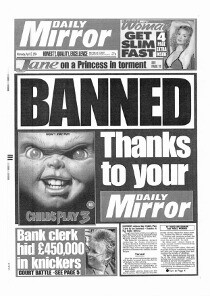
Before dealing directly with the nasties, it is useful to give a brief explanation of the way in which British film censorship developed and was employed before the advent of video. The main board of censorship in Britain was, for most of the 20th century, known as the British Board of Film Censors (or BBFC). It was established in 1912 as a result of the 1909 Cinematograph Act, which made it necessary for cinemas to get licenses from local authorities if they were to screen films. Although this bill was meant to address the issue of fire safety, local authorities began refusing theaters licenses based on the content of the films they were showing (Robertson 80). A pivotal court case upheld this broader interpretation in 1911, effectively establishing censorship at a local level (Robertson 80). Out of fear that this would lead to broader governmental censorship, several film industry heads, in conjunction with the British government, set up the BBFC (Robertson 80). It needs to be emphasized that although the head censor at the BBFC was always appointed by the British Home Office, the Board had no official power to legally ban films. Instead it classified (or rejected) them based on their content, and these classifications (or lack thereof) would help inform decisions made on a local level. In the end, the power always resided with those local authorities. For instance, as Guy Phelps notes, films rejected by the Board could be passed locally, while films certified by the Board could be banned locally (40-1). Nevertheless, it would be a mistake to underestimate the influence the Board had on censorship. While local censors may object to any given Board rating, as Phelps observes, it was quite rare for a certified film to be banned (40-1). Finally, it is worth noting that, unlike the progress of American censorship in which the 1960s saw the downfall of most local censor boards due to the influential Freedman v. Maryland case (Wittern-Keller 271), no such major change occurred in Britain. In the 1980s, the local authorities in Britain were still fully capable of banning films (Robertson 78). While there were certainly other elements which factored into which films were censored, the long history and relationship between the BBFC and local authorities can be seen as the backbone of British film censorship throughout much of the 20th century. 1
It is in part because of this long history that the introduction of video proved to be controversial. Quite simply, while cinemas had been forced to comply with regulation for over half a century, video distributors were not bound by these earlier laws. Consequently, as horror historian Kim Newman later recalled, these years offered “brief but unprecedented access to material which was hitherto almost legendary in its unavailability” (132). Various tabloids saw it in a similar manner in 1982, only they were more fearful about its effects. As the Daily Star commented, the video boom meant that “youngsters” were now able to watch “uncut versions” of “some of the most horrific and violent films ever made” (Graham 13). The Daily Express furthered this impression, writing that a “new cult” was “sweeping the country: horror videos,” as “shops [were] openly — and legally — selling and renting films which show,” among other things, “castration” and “violence including the use of chain-saws and power drills” (Dawe 7). From this perspective, what appeared to emerge was a flood of sadistic, uncut films being released en masse and seemingly uncensored through an apparently unregulated venue.
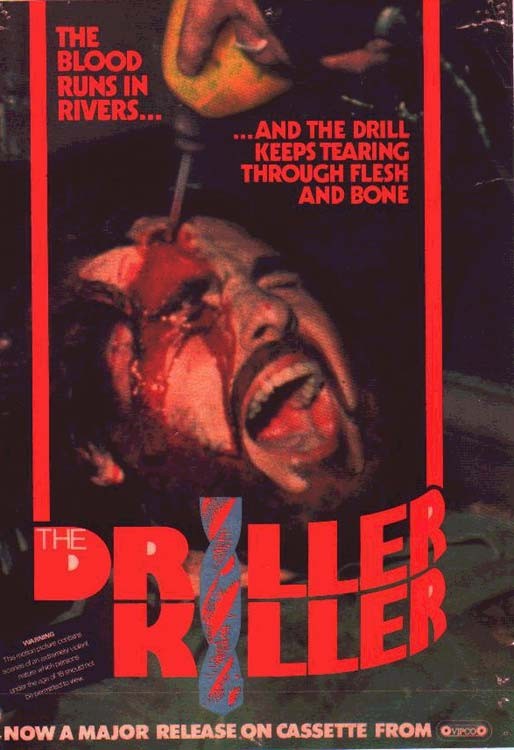
Driller Killer, Abel Ferrara
On top of this, in order to compete with the sale of more popular Hollywood titles, these videos would often adopt wildly sensationalistic marketing strategies. As Egan observes, their box covers frequently featured images of intense violence meant to catch shoppers’ attention and entice viewers with the notion that what they were seeing was “new and alien” to British society (52). One particularly infamous cover was the one for the 1979 film Driller Killer. The shoppers’ immediate attention would likely be taken by the frozen film still of a man screaming in pain, blood pouring down his face, as a power drill bores into his forehead. Complimenting this image, in sharp red text, the box exclaims that “The blood runs in rivers . . . and the drill keeps tearing through flesh and bone.” Assuming this has piqued the viewers’ interest, the back of the box goes on to dare them to watch the film, explaining how “A steel stomach is required to watch the final scenes of mayhem.” While this example was particularly eye-catching, the others followed a similar pattern, frequently using images of violence, garish colors, and provocative text to intrigue viewers. In many ways one could argue that this marketing was as important as the content of the films in spurring outrage. Indeed, as Egan writes, the cover art was frequently featured and analyzed in the press; often more so the content of the films (57). They were easy symbols with which anti-nasty campaigners could strengthen the impression that the video market was peddling uncut horror to anyone with enough cash to buy it.
_630_341.png)
Cannibal Holocaust
In reality, however, this was just an impression. In fact, most distributors were savvier about the cultural milieu than it may have appeared. Although they would certainly advertise their films in provocative ways, knowing they may run into trouble over the content, many of the nasties were cut for their video releases in Britain. Nightmares in a Damaged Brain (1981), for instance, lost ten minutes of explicit content, while Cannibal Holocaust (1981) lost six (Egan 59). Other films, like The Evil Dead (1981), had actually been passed by the BBFC in their cut form for their earlier releases in theaters. Accordingly, the video distributors of these films would put the BBFC certified rating on their respective boxes (Egan 62). More interestingly would be the fact that many films which hadn’t previously been certified by the BBFC also tended to carry some sort of recognizable rating (usually inspired by MPAA’s “R” and “X”) in an early attempt at self-regulation (Egan 62). Now this does not mean that these films weren’t still extreme, or that all of the distributors were willing to go along with this self-regulation. What it does help illustrate, however, is that the crusade against these films was mounted in response to an impression they created, rather than the more complex realities of the evolving video market.
In any case, as concern over the alleged content of these films grew, local authorities began searching for ways to police them. Eventually, nearing the end of 1982, it was discovered that bans may be issued if the videos were successfully prosecuted under the Obscene Publications Act 1959. When it was originally passed, the purpose of this act was actually to redefine the notion of “obscenity” in such a way that would protect art (Phelps 60). Up until that point, the definition of “obscenity” was based on the “Hicklin test,” which rose from an 1868 court case, and considered anything obscene which had the power to “deprave and corrupt” a significant number of people, regardless of its artistic merit (Phelps 60). The amended definition provided a defense for works which were, if taken as a whole, in “the interests of science, literature, art, or learning” (Phelps 45). While this redefinition provided a spiritual defense for film as art, in practice, it actually had the potential to cause further censorship. The problem was that the bill offered no protection for a film that had been refused by local authorities. Given this, the act only gave censors criteria upon which a film could be banned on a larger scale. Ultimately, as Geoffrey Robertson notes, it effectively imbued Britain’s Director of Public Prosecution with the ability to ask for bans on films which were proven to be obscene in court under this definition (79). And indeed, it was through this bill that the video nasties were initially prosecuted. Essentially, if a violent video was proven to be obscene in court, it gave police throughout the country the right to seize and destroy copies of it. Among the first to be successfully prosecuted was the aforementioned Driller Killer. Following the trial, the Daily Express was happy to report that hundreds of copies of the film were subsequently rounded up and burned (Rees 9). Fines were also introduced early in 1983, while prison sentences for distributing video nasties became possible (“Fine…” 11). Nevertheless, the censors found serious problems with this approach. For instance, a video might be proven to be “obscene” by one court, but be upheld as “art” in another, which meant that the list of “official” nasties was under constant change (Egan 1). This system also put an enormous amount of pressure on the police, as they would have to physically confiscate, watch, and destroy the videos. Given these drawbacks, the Daily Mail wrote that this system of dealing with the nasties was “like trying to mop up a sea of filth with a scrap of bath sponge” (“Rape…”). Those protesting these videos felt that larger and stricter censorship was necessary. However, in order for the government to take serious notice, the campaign against of these videos would have to drastically increase in intensity.
It was during the summer of 1983 that this occurred, as protestors began linking violent video content with criminal activity. While fear of crime is a perennial issue, it is worth noting that, in 1981, Britain had experienced a series of devastating riots. Sparked by rising unemployment and racial tensions, protestors clashed violently with law enforcement throughout the country. Clive Unsworth writes that these riots effectively created the impression that chaos was engulfing the British mainland, as the media presented footage of “rioters in guerrilla battledress” and, more shockingly, “of children hurling fragments of pavement at blood-spattered policemen” (75). While these riots were rarely directly invoked during the crusade against the video nasties, they had certainly engendered fears over the stability and future of British society. Moreover, according to Robert Reiner, the intense politicization of the idea of “law and order” by Margaret Thatcher and the Conservative government led citizens to become further concerned with the subject (74). So much so that it was during these years that British political analysts first tried to research and address the growing public issue of “fear of crime” in its own right (Reiner 74). Naturally, with the heightened anxiety over this issue, many were looking for targets which could easily be held responsible for criminal activity. Accordingly, as Kay Dickinson notes, some social conservatives began wondering if “perhaps there was something in the fact that the 1978-1982 period had seen a rise in both violent crime and video player ownership” (132).
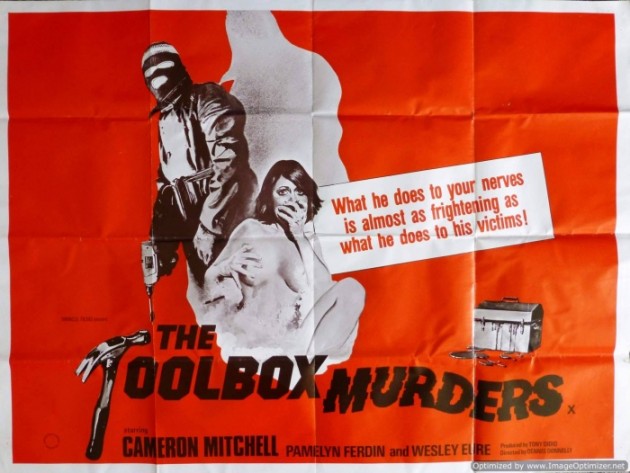
Following this train of thought, it did not take long for the video nasties to be held responsible for a host of crimes occurring throughout the country. For instance, in their front-page article “Fury Over The Video Rapist,” the Daily Mail attempted to show how a teenager’s “unremitting diet of horror videos” drove him to commit rape (Miles 1). “A killer thought he was dreaming when he murdered his victim after watching a video ‘nasty’” reported the Daily Mirror shortly thereafter (“‘Nightmare Murder’…” 7). Responding to a different murder, The Daily Mail ran another front-page article with the headline “A Video Nasty Killer,” exclaiming that a “‘video nasty’ show” was the “trigger that finally turned a young psychopath into a killer” (White 1). The Daily Express, meanwhile, equated buying the nasties with buying child pornography, arguing that the films fuelled the “sexual psychopathic fantasies” of murderers and rapists (Ross and Summers 8). Probably the most bizarre connection to crime came when the Daily Mirror reported on a series of unsolved violent sexual assaults directed at ponies in the county of Kent. Talking to the press, a police spokesman claimed that the nasties might be responsible for the culprit’s deviancy (Jackson 5). The head of Scotland Yard’s Obscene Publications Unit claimed that even the Yard was coming to the conclusion that the nasties “could play a part in the general spread of violence,” given how, recently, they had come across “murders of such horrible, perverted a nature that the perpetrators must [have gotten] it from somewhere” (Porter 1). As can be seen, these videos effectively became an easy way to explain the apparent growing disorder in Britain.
Concern was further heightened when these tabloids began speculating about the effects of the nasties on children. The Daily Mail was particularly steadfast in this respect. They compared video nasty watching with drug use, writing that “more and more children” are becoming “videoholics,” and that their “impressionable minds might become so inflamed by what they saw” that “to recreate murders or rape would be an acceptable risk” (“Hooking…” 6). In another impassioned column, the tabloids directly targeted the government, asking: “How much longer will the Government dither and Parliament blather while our children can continue to buy sadism from video pushers as easily — and almost as cheaply — as they can buy fruit gums from the sweetie shop? . . . Are we insane? Are we bent on rotting our own society from within” (“Rape…” 6)? Of course, as Lee Grieveson writes, this notion that children should be seen as innocent and highly impressionable “citizens-in-formation” is a justification for film censorship which dates back to the debut of cinema (14). That an almost identical conception of childhood was used in the 1980s is an indicator of the enduring quality of this idea. More importantly, however, speaking specifically of Britain during this period, the invocation also strongly reflected the concern over growing societal disorder. Indeed, the implication was that if these videos weren’t stopped, they would sow the seeds of even greater immorality and lawlessness for generations to come. And, ultimately, as a testament to the potential power of this rhetorical strategy, the government took notice.
However, if any sweeping legislation were to be passed, the British parliament wanted some form of academic support for the claims that videos were affecting children. Accordingly, a research team was assembled through Oxford Polytechnic by Clifford Hill with the intention of figuring out how many children between the ages of five and sixteen had seen the nasties. Questionnaires were sent out to various schools across the country with the intent of getting this estimate. Cross-referencing these questionnaires with journal entries written by the children, along with analyses provided by law enforcement officials, the final study purported to show the inevitable effect of the video nasties on society (Hill 26). The report, entitled “Video Violence and Children,” claimed that nearly forty percent of children under seven had seen at least one video nasty (Brown 80). More strikingly, it concluded by claiming that, if the nasties weren’t strictly dealt with, “a time-bomb of violence” may “explode on the streets of Britain” in the near future (Brown 80). These findings understandably fueled further panic in the tabloids. “The boom in video nasties is turning Britain’s children into a generation of ghouls,” proclaimed the Daily Express on its front page (Coolican 1). The Daily Star printed the “spine-chilling” letters of children who had seen the nasties, prefacing them with the question: “Could this be your child?” (Evans 5). Finally, in “Sadism for Six Year Olds,” the Daily Mail summarized the study’s findings and then proceeded to congratulate itself for having alerted the public to the dangers of the nasties in the first place (Miles 1-2). With this study receiving a good deal of support from the popular press, it appeared certain that censorship was needed to stem the rise in crime.
Given its extreme claims, Hill’s report was criticized by other academics. The methodology was called into question by communications researchers Graham Murdoch, Guy Cumberbatch, and Paul Bates, who all felt that the study did not have proper controls in place to determine whether the children had actually seen the films they had claimed to (Murdoch 64). The most revealing criticism probably came from Brian Brown, who had served as one of the head researchers for the initial “Video Violence and Children” report. Working for Oxford Polytechnic, Brown claimed that Hill mislead the research team and exploited the name of the university in an attempt to legitimize the report (68). In fact, according to Brown, given they had to produce something quickly for the parliamentary debates, the original framework of the study was never meant to make any statements with regards to the effects media had on children, as much more “heavily funded teams of researchers had failed to demonstrate comparable conclusions [on the subject] in the past 30 years” (70-1). Instead, Brown stated that the study was designed to simply get a rough idea of how many children had seen the nasties (73). However, due to the pressures from parliament, Brown noted that the primary report of the study was not only rushed, but that Hill had actually selectively interpreted, and in some cases outright fabricated, a good deal of the evidence to support the predetermined conclusion that the videos were responsible for criminal activity (80). Even beyond these allegations, that the report would lean in the direction of censorship certainly seemed known to Graham Bright, the Conservative MP who was responsible for introducing legislation against the nasties. Indeed, speaking to the news before the report had made any findings, Bright reassured Britons that: “there is research taking place and it will show that these films not only affect young people but,” as he believed, “they affect dogs as well” (“Ban …”). While the report failed to address his concern over the mental wellbeing of dogs, Bright’s certitude strengthens the notion that the research was designed to get certain results with respect to the effects these videos had on children.
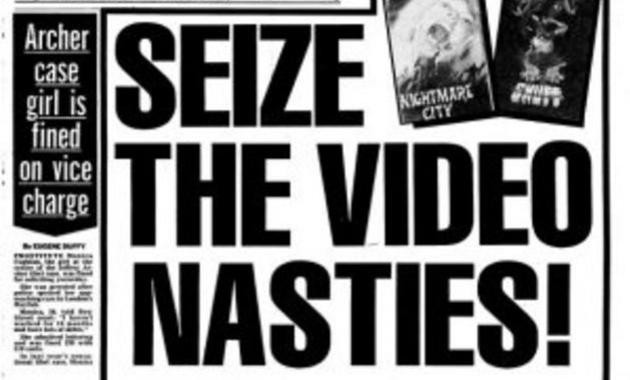
In spite of the criticism leveled at the report, there was little support for most of the films facing potential censorship, making it difficult to start an anti-censorship campaign. Quite simply, at that point, the nasties had been so thoroughly demonized in the public’s eye that few were willing to defend them directly. Even film critics who were unhappy with the notion of further censorship had difficulty in mounting any sort of defense for the films. For instance, in addressing some of the more extreme nasties, Financial Times critic Nigel Andrews clarified that he did not “wish to cheat the issue of censorship by pretending there is serious artistic merit in any of these movies” (12). Instead, as he argued, the problem was not that the nasties might be banned, but that the proposed legislation could potentially lead to the censorship of what he considered more “authentic” artistic works (12). While this may have been a legitimate concern, by framing it in this manner, rather than providing a solid defense for the nasties, arguments like this largely reinforced the position that the nasties were artless and that their removal from British society would not be a great loss.
Lacking stronger opposition to censorship, in 1984 the British parliament overwhelmingly sided with the anti-nasty campaign and passed the Video Recordings Act (or VRA) in an effort to strictly regulate the video market. 2 Among other things, the bill made it a criminal offense to distribute videos which did not have a classification designated by an official rating body (Egan 1-2). When it came into effect, the government appointed the BBFC as this official body and tasked it with certifying every video considered for release (Egan 1-2). After nearly 75 years of acting relatively apart from the government, this decision effectively gave the BBFC (which was quickly renamed the “British Board of Film Classification”) state-based power over the type of content allowed on home media throughout the country. Indeed, if the BBFC, for whatever reason, refused to classify a video, its distributors would be unable to sell it in Britain (Egan 2). Furthermore, as Egan writes, distributors had to pay the BBFC “for the privilege of having their title considered,” which meant that some distributors wouldn’t even bother submitting certain films (2). As one might expect, many videos were cut, while others faded altogether from British store shelves. 3 The process was not immediate but, by 1989, the Daily Express was content to deem the crusade a success, claiming that children were, at last, adequately protected from video violence (Youle 15). Britain was thus rid of this alleged society-destroying menace.
Of course, the actual effect this new law had on crime was negligible. Crime rates continued to rise, peaking in the early 1990s, when they appeared to be double what they were in the early 1980s (Reiner 77). Inevitably, those who crusaded for the legislation began to question whether the BBFC was doing its job properly. These doubts were then exacerbated in 1993, when a video copy of Child’s Play 3 supposedly inspired a pair of boys to kidnap and brutally kill two-year-old James Bulger, a scandal which resulted in further panic and culminated in a tightening of the VRA’s regulations (Carter and Weaver 58).
What I have attempted to show in this paper is the way in which outside societal concerns can affect and shape film censorship. Specifically, I have argued that the British panic over video nasties was informed by a stronger fear of rising crime. To this end, when the nasties became linked with criminality, censorship was positioned as an easy step towards curing this larger problem. However, I do not wish to claim that video censorship was the only goal of the anti-nasty campaign. For instance, Martin Barker has argued that the Conservative Party supported the panic in an attempt to boost its law and order image (11). Egan also argues that, in getting behind this crusade in 1983, Conservative MP’s were able to win votes for the general election which took place at the end of that year (4). Meanwhile, the conservative tabloids benefited in a different way. Specifically, they were able to gain support, and even some validation, for their larger crusade against what they saw as a growing “permissiveness” in British society. The Daily Mail made this connection emphatically clear when it championed Lord Chief Justice Geoffrey Lane’s view of the nasties. As Lord Lane commented, “so long as permissiveness or immorality increases so will crime, both in quantity and nastiness” (“‘We must…” 2). Given this, in the end, it might be said that what scared many anti-nasty campaigners was not what the nasties presented, but what they represented.
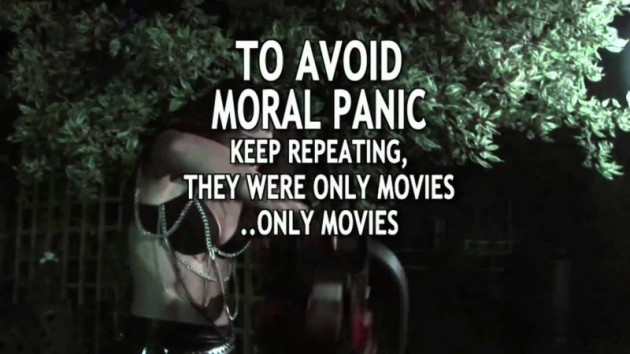
Click here for a listing of the 72 films catalogued under the Video Recordings Act.
Bibliography
Andrews, Nigel. “The Video Nasty Debate – Sense and Censorship.” Financial Times 10 Dec. 1983: 12.
Ban the Sadist Videos! Dir. David Gregory. Blue Underground, 2005.
Barker, Martin. “Nasty Politics or Video Nasties?” The Video Nasties: Freedom and Censorship in the Media. London: Pluto, 1984. 7-38.
Brown, Brian. “Exactly What We Wanted.” The Video Nasties: Freedom and Censorship in the Media. London: Pluto, 1984. 68-87.
Carter, Cynthia, and C. Kay Weaver. Violence and the Media. Buckingham: Open UP, 2003.
Coolican, Don. “Four Children in Ten Watch Video Nasties.” Daily Express 24 Nov. 1983: 1-2.
Dawe, Tony. “This Poison Is Being Peddled as Home ‘Entertainment’” Daily Express 28 May 1982: 7.
Dickinson, Kay. Off Key: When Film and Music Won’t Work Together. New York: Oxford UP, 2008.
Egan, Kate. Trash or Treasure?: Censorship and the Changing Meanings of the Video Nasties. Manchester: Manchester UP, 2007.
Evans, Catherine. “Video Nightmare.” Daily Star 24 Nov. 1983: 4-5.
“Fine for Video ‘Nasties’ Trade.” Daily Mail 23 Feb. 1983: 11.
Graham, David. “Video Film Kids Beat the X-Cert.” Daily Star 7 May 1982: 13.
Grieveson, Lee. Policing Cinema: Movies and Censorship in Early-Twentieth-Century America. Berkeley: U of California, 2004.
Hill, Clifford. “Historical Background to the Video Enquiry.” Video Violence and Children. Ed. Geoffrey Barlow and Alison Hill. New York, NY: St. Martin’s, 1985. 24-32.
Jackson, John. “Pony Maniac Strikes Again.” Daily Mirror 3 Jan. 1984: 5.
Miles, Tim. “Fury Over the Video Rapist.” Daily Mail 28 June 1983: 1-2.
Miles, Tim. “Sadism for Six Year Olds.” Daily Mail 24 Nov. 1983: 1-2.
Murdoch, Graham. “Figuring Out the Argument.” The Video Nasties: Freedom and Censorship in the Media. London: Pluto, 1984. 56-67.
Neighbour, Richard. “Hooking of the Video Junkies.” Daily Mail 13 Aug. 1983: 6.
Newman, Kim. “Journal of the Plague Years.” Screen Violence. Ed. Karl French. London: Bloomsbury, 1996. 132-43.
“‘Nightmare Murder’ by Video Fan.” Daily Mirror 6 July 1983: 7.
Petley, Julian. Film and Video Censorship in Modern Britain. Edinburgh: Edinburgh UP, 2011.
Phelps, Guy. Film Censorship. London: Victor Gollancz Ltd, 1975.
Porter, Robert. “Film Show Sickens MPs.” Daily Mail 2 Nov. 1983: 1.
“Rape of Our Children’s Minds.” Daily Mail 30 June 1983: 6.
Rees, Alun. “Violent Videos Are Outlawed.” Daily Express 1 Sept. 1982: 9.
Reiner, Robert. “Crime and Control in Britain.” Sociology 34.1 (2000): 71-94.
Robertson, Geoffrey. “The Future of Film Censorship.” British Journal of Law and Society 7.1 (1980): 78-94.
Ross, David, and Owen Summers. “God Help Our Little Children.” Daily Express 22 Aug. 1983: 8.
“Switch Off the Nasties” Daily Mail 29 June 1983: 7.
Unsworth, Clive. “The Riots of 1981: Popular Violence and the Politics of Law and Order.” Journal of Law and Society 9.1 (1982): 63-85.
“‘We Must Outlaw the Hard Porn’” Daily Mail 9 Nov. 1983: 2.
White, Christopher. “A Video Nasty Killer.” Daily Mail 13 July 1983: 1+.
Wittern-Keller, Laura. Freedom of the Screen: Legal Challenges to State Film Censorship, 1915-1981. Lexington, KY: U of Kentucky, 2008.
Youle, Mark. “Naughty – and Nice!” Daily Express 11 Dec. 1989: 15.
Notes
- It should be noted that there were certain things which were, quite understandably, banned outright, regardless of what censor boards thought. In 1937, the Cinematograph Films (Animals) Act made it illegal to sell and exhibit films showing genuine animal cruelty (Phelps 141). Meanwhile, The Protection of Children Act 1978 made it illegal to sell and exhibit indecent photographs of children (Robertson 78). The Obscene Publications Act 1959 also had the potential to censor “obscenity” in film after 1977 (Robertson 79), however I will cover the impact of that later. ↩
- It is worth noting that, at the time of passing this bill, few, if any, Members of Parliament had actually seen one of the nasties. A screening had taken place a few months prior. However, what was shown was not a full length film, but a 22 minute compilation featuring out-of-context excerpts from six different films (Porter 1). ↩
- The list of vanishing titles also included films which were not “official” nasties. For example, both Straw Dogs (1971) and The Texas Chainsaw Massacre (1974) were refused video classification by the BBFC (Petley 77). ↩


